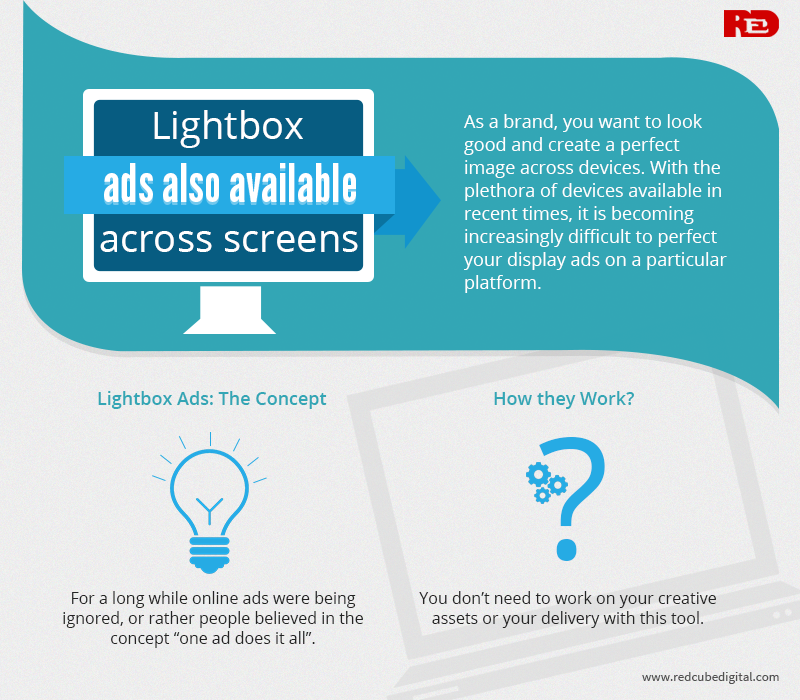23
Lightbox Ads also Available Across Screens
23rd February 2015As a brand, you want to look good and create a perfect image across devices. With the plethora of devices available in recent times, it is becoming increasingly difficult to perfect your display ads on a particular platform. While you try hard to create different display ads, and make it appear stunning on the different devices, you fail to impress the audience most times.
With the ever increasing world of smart phones and tablets, you are stuck in the complex web of devices. Creating different ads can become a pain, and making a single ad may not work across the devices. So, now that you are stuck, you need help too! That’s why Google has come up with the lightbox ads concept. With this single tool in your hand, you can use the in-built creatives, and keywords to define your concept ad across the plethora of devices.
How this platform works, and how exactly will it help you in displaying ads on the mobile platform is a question that will be quickly answered. Basically, this is your answer to portray an effective image on the mobile screens.
For a long while online ads were being ignored, or rather people believed in the concept “one ad does it all”. No wonder, they never thought of how the ads would look across devices, till users of mobile started complaining about the way the ad looked disrupted or ineffective on their mobile devices. When the ads did not gel well with the users, specifically the ones who browse through their mobiles, ad makers and brands started looking out for ways to fill the gap easily.
Google initiated a way out with the Lightbox ads. This single tool helps you optimize ads across the different devices, without actually going out of your way to create an ad for the different devices. The ads, built using this tool, are created on HTML platform, and hence you will find them to be responsive in nature. So, as they move across the different devices, you will find them changing and adapting to the size of the device.
According to a statement made by Google, with Lightbox ads the marketers would be released from understanding the complexities of mobile or other smart devices and they would be able to spend more time on delivering a compelling story. The main aim is to give out a compelling ad and concept rather than spending time on devising ways to make the ad look aesthetic on the mobile devices. While this sounds good, how does the lightbox ad work is another question, probably dwelling on your mind. We will be addressing the question very soon.
You don’t need to work on your creative assets or your delivery with this tool. You just need to work on creating an idea and making it look big and fancy. You may have some amazing creative assets on your Youtube, Google channels and other listings. Lightbox tool will easily pull out effective and creative images from these channels and work out a plan for your ad using them.
Google is working on integrating the different channels of Google and combining them effectively with the ad concepts. Some of the Google products or channels include shopping lists, G+ pages etc. While this is in the coming soon page, you will still find integration between the listings and basic Google channels like Youtube, maps and uploaded images.
You will see that once the integration is complete, the assets are dynamically associated with the publisher site, because of the responsive nature. Cost per engagement is the billing style adopted by this tool, and hence you will see that it not only enhances the brand’s experience but also initiates a definitive style into the brand. A better reach and a qualified audience is a result of lightbox ads.
Whenever a user hovers their cursor on the ad, it magnifies in size according to the size of the device and allows full view of the message. It is a seamless audience solution for your brand’s advertising efforts. So, run your campaign along the wide range of devices without worrying about its effectiveness, as lightbox ads take care of it.

